This blog is a comprehensive Hoi An Travel guide: Situated at the heart of S shaped Vietnam, by the South China Sea, Hoi An is an ancient Vietnamese town painted pretty in yellow hues. Each wall of Hoi An strikes as a vintage post card scene. You may find Hoi An to be incredibly trendy as an “Instagram-pretty” town!
No matter what, this intense romantic destination in Vietnam, Hoi An is the perfect time capsule to escape the rat race of modern world, slow down and breath, create epic memories, explore the remnants of old world rural Vietnamese scenic spots. In this blog, I try to jot down my favorite local experiences of Hoi An. I also give you an idea of the most Instagrammable spots in the yellow town of Hoi an.
Pin it for later!
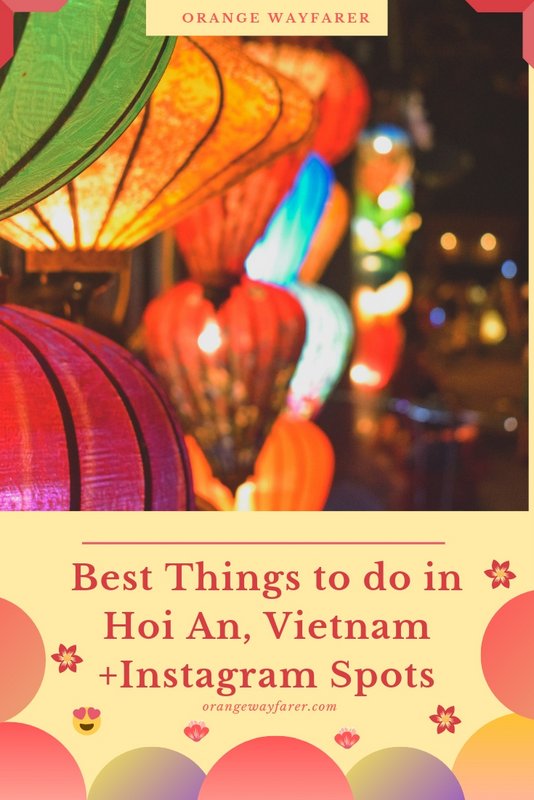
Hoi An: An Unending Old School Romance
It rains motor bikes on the streets of Hanoi and Saigon. The fast changing face of Vietnam’s flag bearing metropolis are slowly succumbing to a uniform “developed zone” showcasing the gradual economic prowess of South East Asia. Your eyes might strive a while to pin point the oriental identities.
It is only when the Pho-fed tourist groups have bought the conical bamboo hats, hopped on and off the war museums, Mekong delta, junk boat cruises on Halong Bay, and finally reach Hoi An, magical realism unfolds!
Hoi An is a painter’s unfinished canvas, pretty as a bird. She is puffing a lazy smoke somewhere at the backyard. The canvas is left to soak in bright sunshine which abound Hoi An. The Perfume river snakes around it, tropical foliage finds a way to grow and thrive, the vivid yellow brushstrokes become rusty by the windows hoping against hope for the good times, calling for it desperately with pretty Chinese lanterns flirting with sea breeze.
Did you know? The Ancient town of Hoi An is a UNESCO heritage site. The UNESCO status is a reference to a medley of influences, from Hun Chinese to Colonial French to Japanese tradesmen and world war fugitives, reflecting in well preserved architectural institutions standing in unison to enchant jaywalking tourists.

One of the traditional lantern shops of Hoi An. One of those you can not escape, would be hard pressed to stop by and sneak a snap.
The eerie calmness of Hoi An- the Ancient Town testifies to a bygone era, where canals would hosts sailors from distant lands. Snake boats heaped up with exotic choice of spice, shining gold, intricate ceramic tiles and pots and fine silk would find a way to discerning buyers. The now sleepy and petite town was pulsating with waterborne economy a couple of century back.
Today, tourists flock in to see the remnants of the trade era, still visible through the yellow walls, red lanterns, paper boat festivals and gifted tailors.
Did you know? Old town Hoi An was also touted as “Faifo” by the old school Western traders!
“Timelessness”. The word describes calm and peaceful ambiance of Hoi An. Time stands still at the corner of every narrow lane, where the dark of the world is painted in ochre. She is so pretty that naysayers find her as an “epitome of South East Asian touristy exotics”, in disbelief, obviously!
Walking by the Thu Bon river promenade at night, amid thousand splendid lanterns, I chuckled remembering the critics saying, “Hoi an is a made up town”.
Traveling to Hoi An, Vietnam
We reached the domestic airport in Danang from the north western mountain region of Sapa. We rented a taxi through an app (then Uber, now Grab) and reached Hoi An in an hour’s time. The rate changes basis on tourist season and the time of your travel. Tentatively, it is $20.
If you want to travel by train from Hanoi or Ho Chi Minh City, reach Danang train station. The overnight train runs on scheduled time and ensures a good night’s sleep.
While rainy season in Hoi An pours ruthlessly, often causing flood, the best time to visit Hoi An is from February to May, the dry months. Summer is humid, often triggering mercury to reach a strenuous level of 39C.
Reaching Hoi An is easy as the city is well connected with the major city of Danang. Danang has an international airport. Chick here to secure your transport from Danang to Hoi An on Bookaway app. You can also travel to Hoi An from places like Hue, HCMC, My Son etc. Bookaway gets you plenty of options and best price to travel in the region.
Also read this comprehensive travel guide to Vietnam!

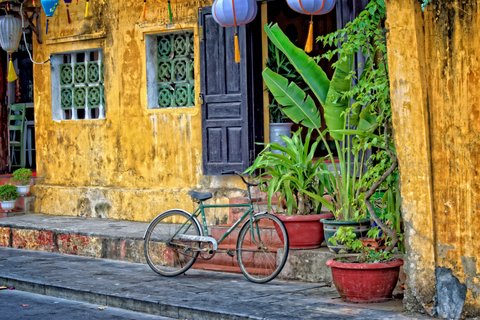
Also read: How to spend three days at the Fansipan Mountains of Sa Pa, Vietnam
Activities Galore in Hoi An: A list of 15 Best things to do in Hoi An
We were in Hoi An for 5 days. The peace, the stillness abound was assuring and lucrative. Besides, we stitched a few suits and dresses from famed Hoi An tailors and explored nearby points of interest in frequent day trips from Hoi An.
We took day trips to My Son, Hue, Hai Van Pass, Cham Island from Hoi An. In case you are planning to explore activities specific to Hoi an, I suggest you to assign at least three days for the ancient town.
The slow paced life at Hoi An and unbound prettiness is painstakingly beautiful. Unlike the typical tourist destinations with a list of places to be ticked off, Hoi An demands your undivided attention and inquisitive eyes. Once you have freed your heart and soul from expectations, trusted Hoi An, and have hit the streets, you are to take up a memorable, almost therapeutic journey.
Explore the Hoi An Old Town
The old town of Hoi An is the much loved UNESCO Heritage zone. Not only the old town of Hoi An houses colonial palaces, but also have preserved them from the gnaw of time with care. Granted, many of these houses now have turned into souvenir shops, you can still spot a handful every now and then with closed entrance and overflowing bougainvillea creepers.
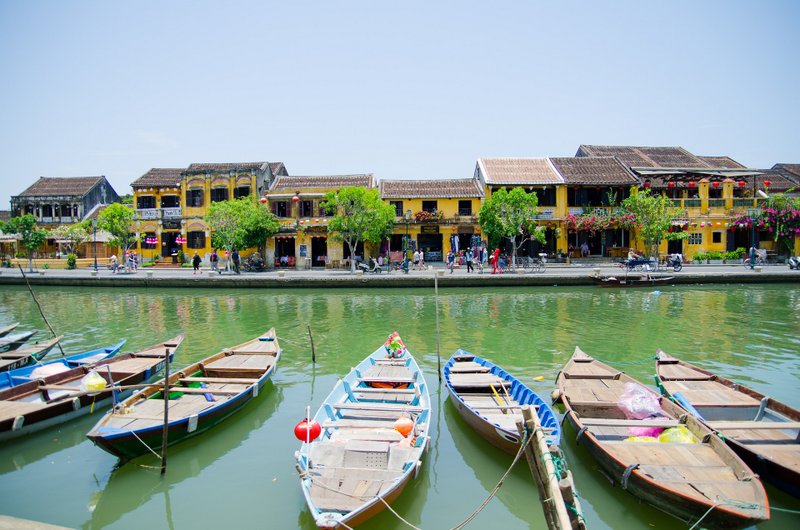
Your visit to the Hoi An old town must begin with a ticket sold by the entrance kiosks. Procuring that ticket ensures your entry inside the various halls and museums, up to 5 point of interests. That said, you can just walk on the street, specially if you are entering from the riverfront, and you are not required to purchase any ticket.
Entry fee to Hoi An Heritage Zone: 120,000 VND With one Entry ticket, you can enter 5 points of interests, including Museums of Folk Culture, Trade Ceramics, traditional theater etc.
The Covered Japanese Bridge
The quintessential symbol of Hoi An, the Japanese Covered bridge is 400 years old. It also houses a Buddhist Pagoda inside.
The covered Japanese Bridge is the starting point of old town. Its intricate detailed cap is an ode to the homeland by Japanese traders thriving in Hoi An during early sixteenth century.
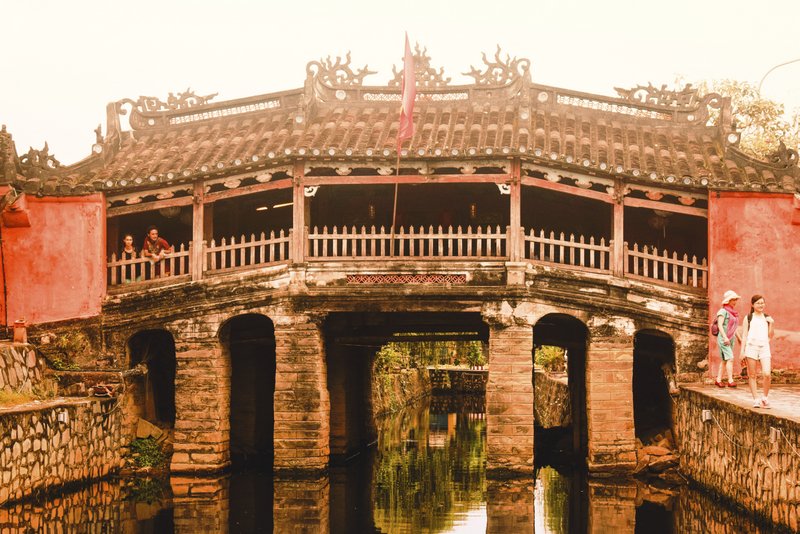
Look out for a soft toy Monkey sitting by the side of the bridge from a yellow window. I know he is sitting there for at least 3 years. He watched tourists frolicking with selfie sticks, fisherman waiting patiently for day’s catch, sleek boats ferrying passengers through the narrow canal as stunning sunsets usher orange rays on the yellow town!
Also read: A suggested 4 days itinerary in Hanoi
Watch history unfold in the traditional households
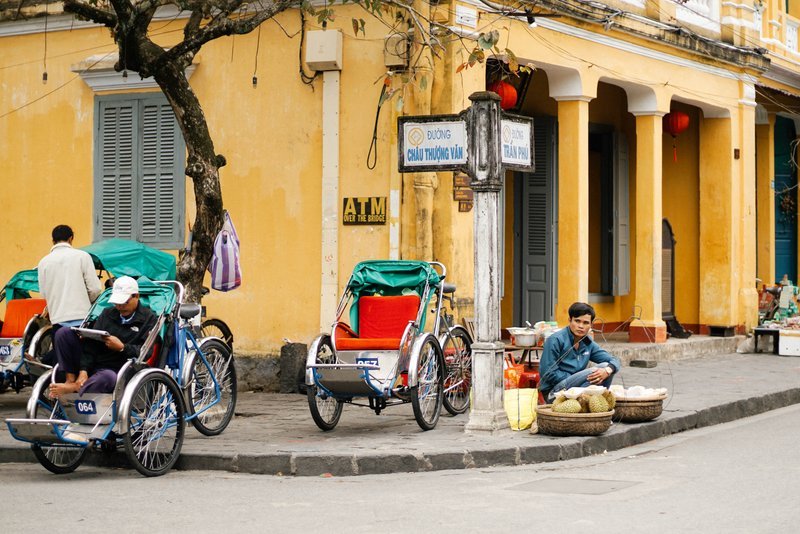
Walking by the streets of Hoi An is a joyous experience. You will see the gradual change in housing structure, the Chinese clock letters on wood boards, the distinct color block styles of old and new neighborhood, local life unfold in manifold ways.
Some of the old houses will allow you access.
Also read: The Doors of Varanasi, exploring the oldest Indian city
The Famous Tailor Craft of Hoi An: Time to Indulge in Shopping!
I found many shops inundated with western tourists, with a weary mother sitting with the son by her side and eyeing for the perfect fit on the waistcoat.
Yes, the outskirts of Hoi An’s Old Town is dotted with plenty of tailor shops stitching the perfect Armani suit for a fraction of its price. We got two of them stitched from Bebe. It takes at least 2 days for get the fitting done. accounting a Day 3 is better if you are a perfectionist.
A few reliable tailor shops at Hoi An: Bebe, Adong Silk, Peace, Simon’s

Beach a day: An Bang Beach
The nearest beach to Hoi An is the An Bang beach, at a distance of 5 KM. The coracles and fishing nets housed on the shore yell about the local nature of the beach. On a clear sky day you can spot the Danang skyline from here.

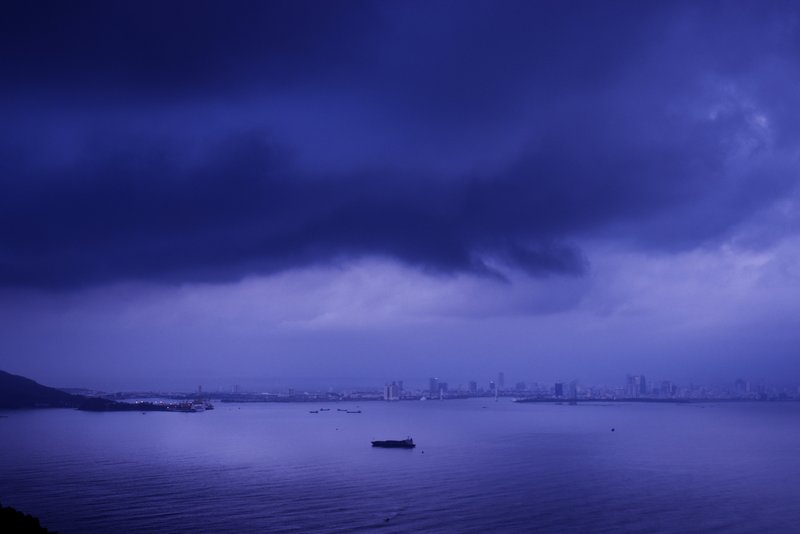
Explore the historical ruins of My Son, a Hindu temple complex by the ancient Champa dynasty
My Son is a Hindu Temple complex, a UNESCO heritage site and housed at a distance of a couple of hours bike ride. Sunrise at My Son is a cherished experience and shall remind you of Angkor Wat at large, sans the tourist crowd.
My Son temple complex was a art and cultural sphere of the Cham dynasty. During the Vietnam war, American forces carpet bombed the area in search of the Viet Congs. The bomb craters remain on the ground.
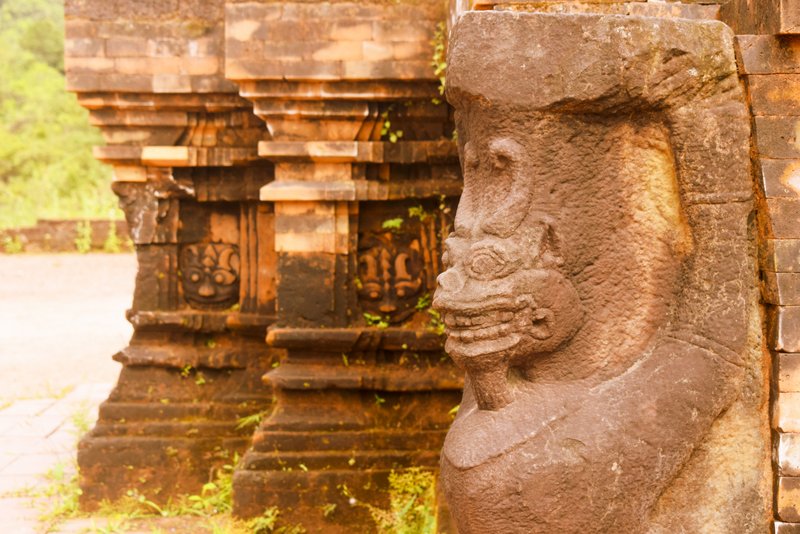
Also read: The lost Kingdom of Hampi, the best kept secret of India!
Ride on the Hai Van Pass
The Hai Van Pass is one of the most scenic stretch of road, not only in Vietnam but in the entire South East Asia region. The sea kisses the feet of the mountains. The road cuts through the steep rocks and takes you nearer to the cloud.
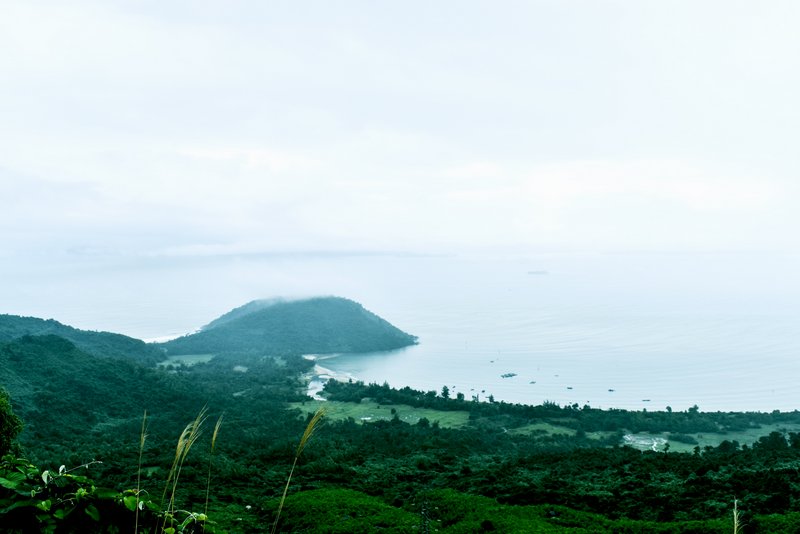
Ditch the bike and embrace a cycle!
Staying true to the rural Vietnamese color, rent a bicycle for a day. Many a times, hotels in Hoi An has this facility. And venture into the deep interiors of central Vietnam, where your language is not spoken but the smile is infectious.

Eat All and then Eat Some More
Originally a port city, Hoi An’s cosmopolitan nature is truly reflected on the food plates. From a pot full of authentic Cao Lau (braised pork pieces with rice noodles) to the too pretty to eat white rose dumplings, Hoi An is a gourmet lover’s easy interest.
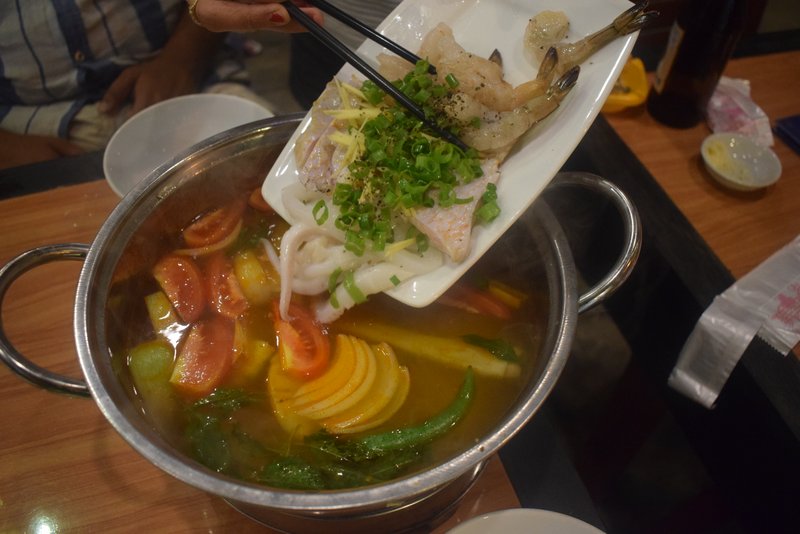
Learn to make perfect rose dumplings: join a cooking class at Hoi an
Do not just eat it, learn how to make it! And making Vietnamese food is a treat in itself! From collecting fresh herbs from the kitchen garden to select the day’s catch from the wet market, you are in for an activity which will occupy many facades of your senses.
Explore the rice paddy fields near Hoi an: watch timelessness of collective agriculture efforts
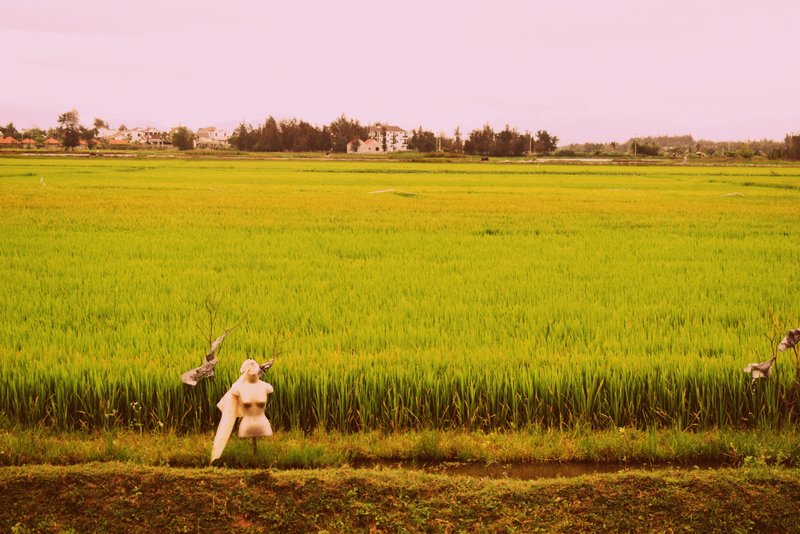
Vietnam is a socialist country whose agro-based economy heavily replies of commune. Rice is an integral part of the meal and rice paddy fields leave no stone unturned to add to the beauty of rural landscape of Vietnam.
Cycling through the rice paddy fields, meeting a few nonchalant water buffaloes on the way, witnessing a labor intense harvest season: Hoi An’s rice fields will teach you a thing or two of a different lifestyle, rooted amidst nature and hopefully instill respect for the food on your plate.
Walk by the river and explore the cafes
The old town is pretty for many reasons. The quaint little cafes add to the charm. The lantern shops have shared their stock with most of the local eateries. They serve everything from Italian to Indian (with SRK singing the best of romantic Bollywood numbers from the wall!).
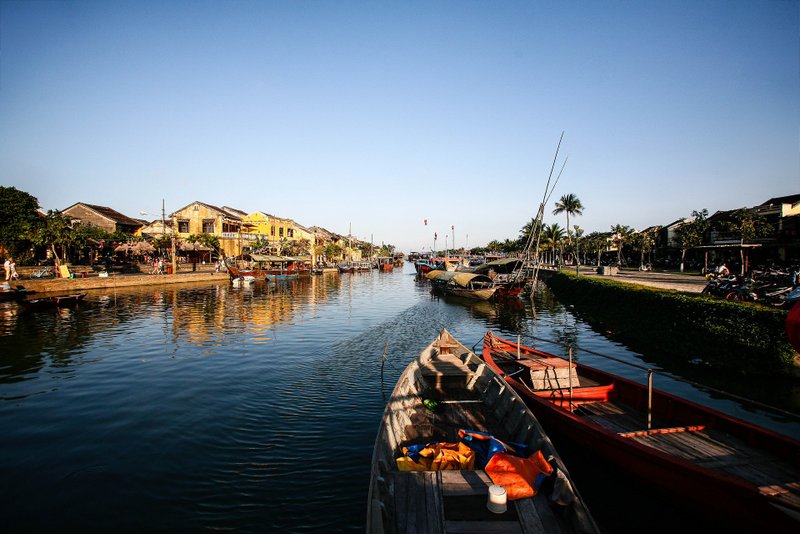
The Central Market
One of the liveliest market in the entire nation, the Central market of Vietnam serves everything from souvenirs to fresh fruits. The nearby fish market will feed into a photographer’s dream project.
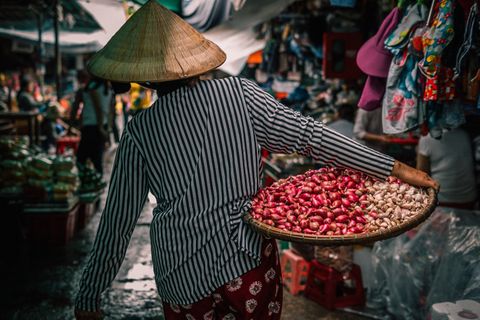
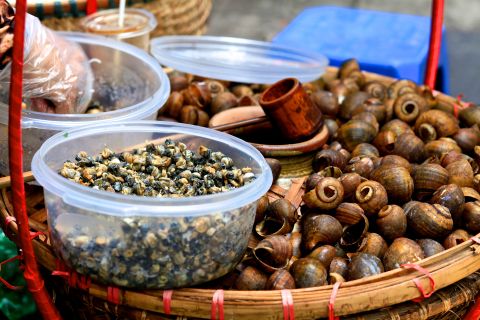

The Night Market at Hoi An
The night market at Hoi An takes place on the other side of the river. It is basically a continuation of the Central market with many food vendors stepping in! You can also take a boat ride, especially the swan boats whose eyes beam with red light. A strange Santa Clause Music plays on the boats!
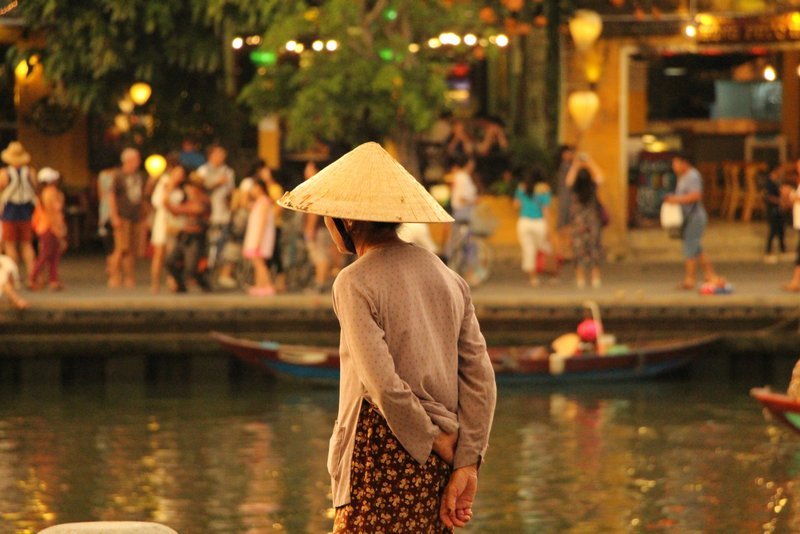
Plan a trip around the full moon cycle to witness paper lamps afloat on the riverbed. Locals observe the custom in the hope of fulfilling wishes. Think twice before you buy a lantern though, it may contain a plastic candle holder inside. Traditionally, it is done with banana leaf boxes.
The Basket Boat Ride
Legends say the basket boats were invented as a measure to avoid steep regal tax. These days, some of them are busy ferrying tourists for a small pay. They are sturdy and safe however has little to no provision for a life jacket!
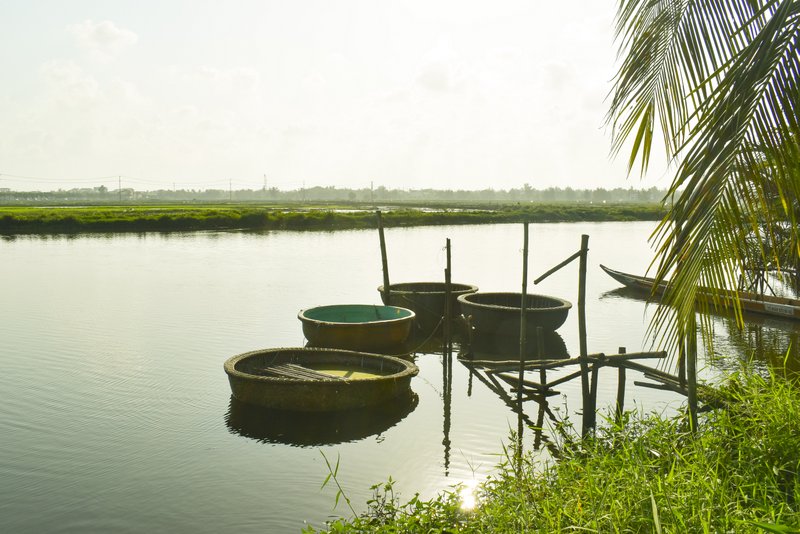
I closed my eyes and inhaled the perfume of Thu Bon river, walked down the paddy fields only to caress a buffalo calf looking at the horizon with empty eyes, probably looking for its mother, found a rusty knife with bloodstains by the street reaching onto the An Bang Beach, exhaled heavy witnessing a frightening South China Sea playing uneven, crazy games with coracle fishing boats, could never have enough of them rice paper and shrimp pancakes, sat quietly by a headless Shiva statue at My Son Sanctuary destroyed by the B52s, touched the glowing silk fabrics on sale with ornate Chinese stamps. And, when the lanterns died down, tired tourists went away, shops were shut down and locals were cycling with a candy floss for the kid back home, I sat with a Pho vendor and sipped each spoonful with care. Was I in love? Yes!
List of the best Instagram Spots in Hoi An
A town so pretty, is bound to have a few “hotspots” for the insta-tribe! Creators will find their inspiration or create epic scene combining various photographic elements. Here, I will list the most preferred insta-worthy destinations from Hoi An though.
The Japanese Bridge
You can never have enough of the pretty bridge. It is best photographed during sunset. If you are lucky to add a boat in the photograph, you have hit the jackpot!
The lantern shop
I hear, these days they charge for price. A dollar for one click. I understand why.
You can pay them or just on the road which anyway is sporadically lit with beautiful lanterns.
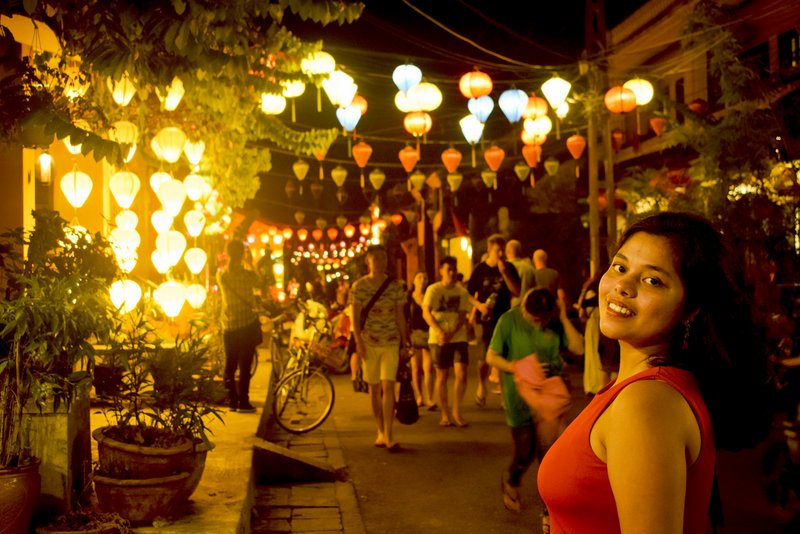
The yellow walls
Get creative with the walls. The Yellow canvas plays a perfect vintage studio background.

The Beach, the Sea and the Wind
Was there ever a man born who was not bewitched by the beauty of the ocean? Try to witness a sunrise by the An Bang beach, especially during monsoon if you are a cloud chaser.

The Paddy Fields
The profound Paddy fields at the outskirts of Hoi An will calm your nerves at the first glance. The next moment, they will inspire the photographer in you!

The Night Market
The picturesque night scene at Hoi An is unique to this destination and demands to be documented.
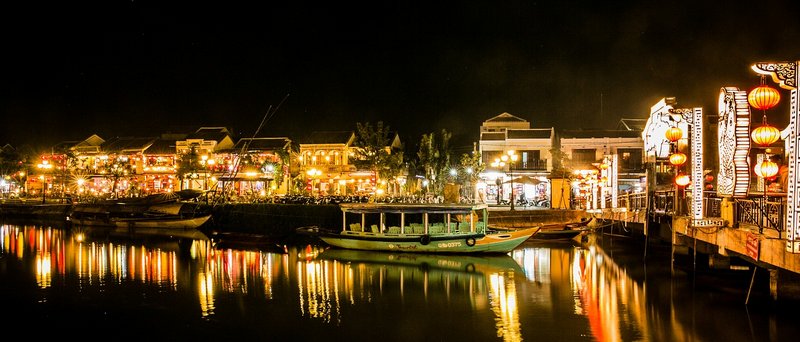
Pin it for later!
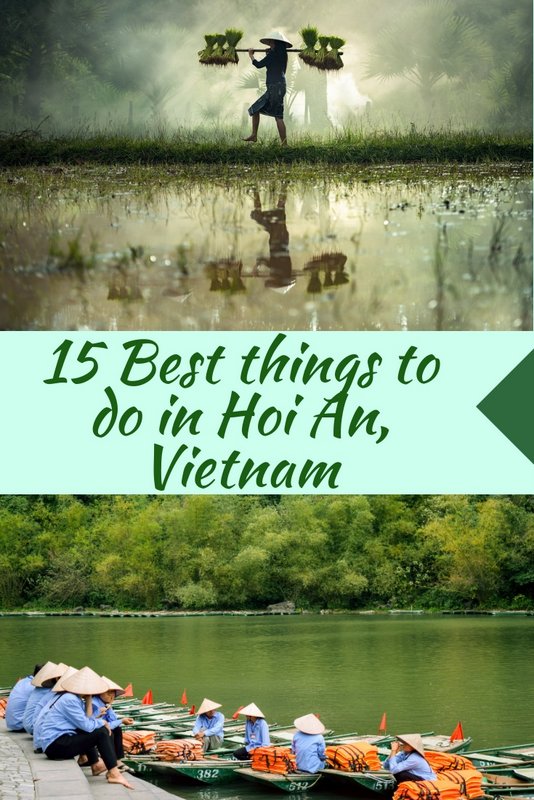
Let’s stay connected on Facebook, Instagram, Twitter!
This post may contain affiliate links. Please read the disclosure post. If you have liked the article, you may support it by buying using these links without any extra cost to you.
Gorgeous post! This looks like a beautiful and interesting area to explore. Your photos are simply stunning. I especially love the picture of people splashing in the rice field.
p.s. That Japanese Covered bridge is really cool, but I have never seen anything like that in Japan. It looks very Chinese to me. Do you know more about the history behind it.
With places like this, every spot is instagram worthy. Loved the pics..
Your photos from An Beach and the Paddy Field are so beautiful! This is a great guide to Hoi An, I’d love to visit one day.
I would love to go to Vietnam and get a whole new wardrobe! It’s been on my list for the longest time. The picture with the workers in the middle of the silk is stunning!
Handy post and very creative photos thanks
Very nice post, really complete!
I loved that you added the Instagram spots too! This is really helpful 😍
Oh I just love Hoi An!! And it’s so photogenic. These are some great tips!
One of my favourite cities, I loved it here 🙂
Beautiful photos! Loved your itinerary, hopefully, will make it to Vietnam someday.
Oooooh, a cooking class in Hoi An sounds like such a great idea! Now I’m hungry, hah.
We really enjoyed Hoi An when we visited last year – the buildings and colors are amazing! I wish we’d had more time to explore the area outside of town though (and go to the beach – it poured rain the day we went!).